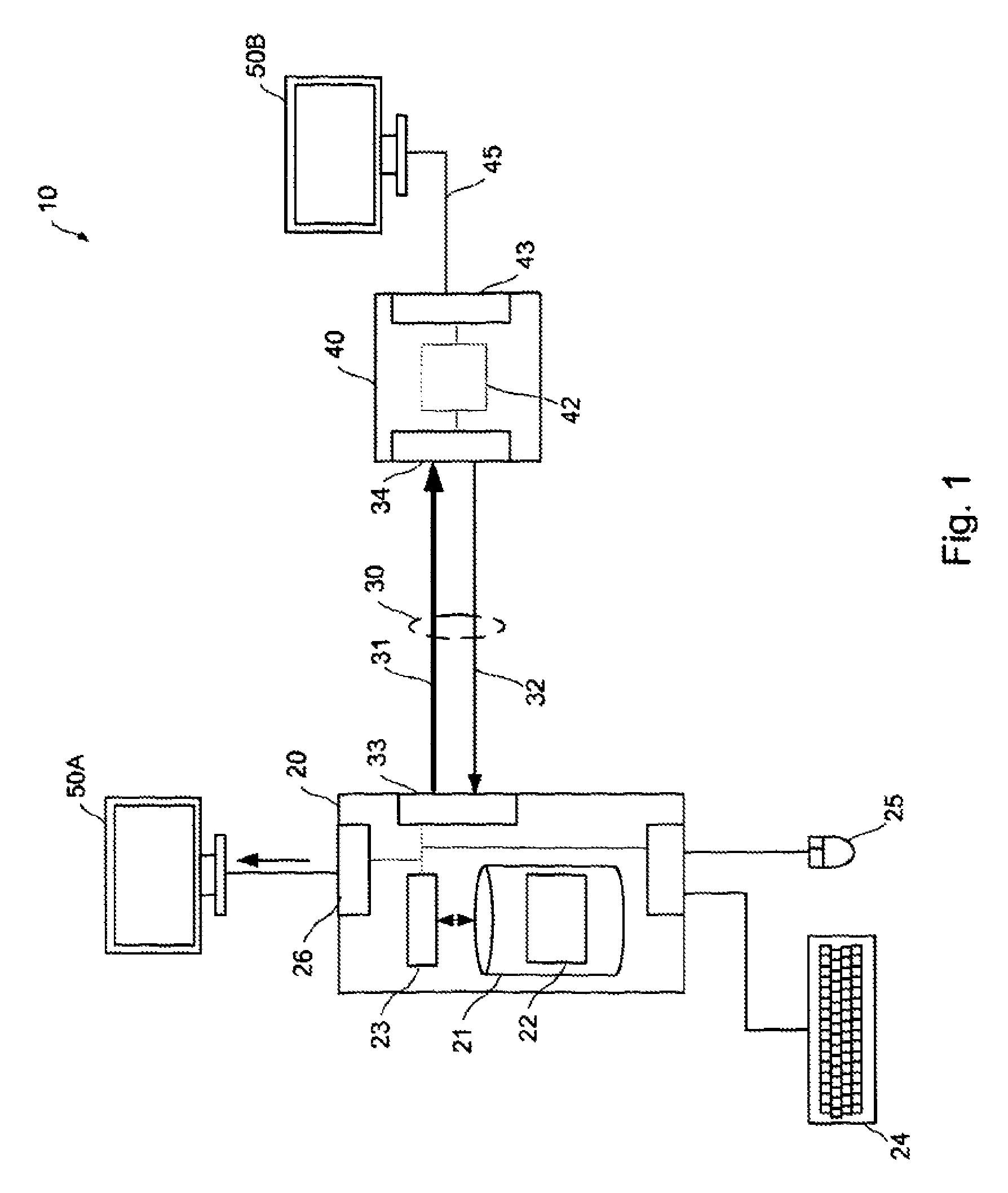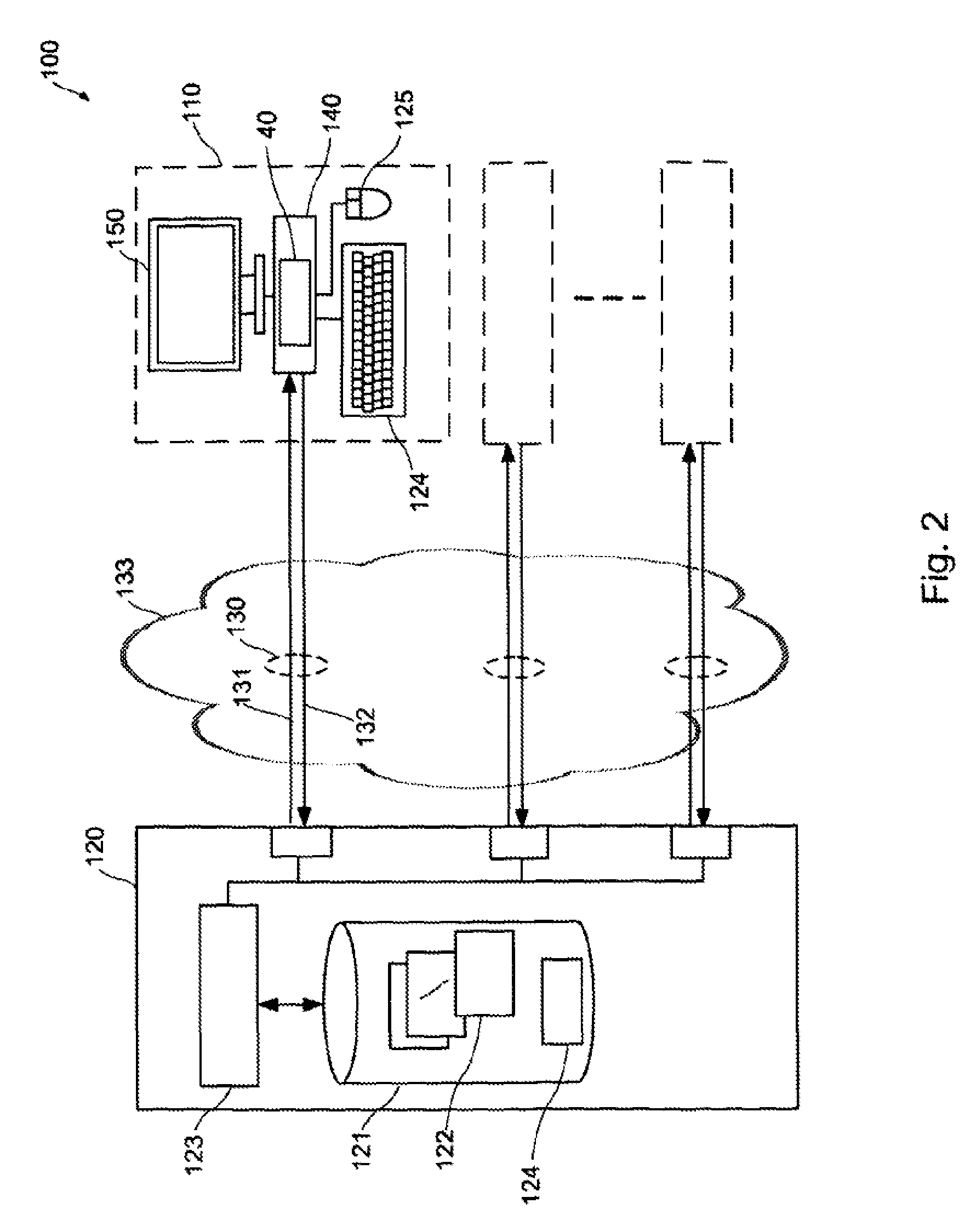Processing of display data in a display system
a display system and display data technology, applied in the field of display data processing in the display system, can solve the problems of devices with a higher consistent power consumption, and achieve the effect of reducing the amount of data
- Summary
- Abstract
- Description
- Claims
- Application Information
AI Technical Summary
Benefits of technology
Problems solved by technology
Method used
Image
Examples
Embodiment Construction
[0023]FIG. 1 shows a first type of display system 10 in accordance with an embodiment of the invention. The system comprises a host processing device 20 and two display devices 50A, 50B. The system shown in FIG. 1 can be a standard desktop computer, a laptop computer or suitably enabled handheld device such as a mobile phone or PDA (Personal Digital Assistant). In a typical manner, the host computing device has a processor 23, storage 21, and a user interface, such as a keyboard 24 and a mouse 25.
[0024]In FIG. 1, first display 50A is connected to the host computing device 20 in a conventional manner, via a graphics card 26. Second display 50B is connected to the host computing device 20 via a general-purpose interface 30, such as Universal Serial Bus (USB). A remote device 40, which will be called a display control device 40, connects between the general-purpose interface 30 and second display device 50B. The display control device 40 appears, to the host computing device 20, as a U...
PUM
 Login to View More
Login to View More Abstract
Description
Claims
Application Information
 Login to View More
Login to View More - R&D
- Intellectual Property
- Life Sciences
- Materials
- Tech Scout
- Unparalleled Data Quality
- Higher Quality Content
- 60% Fewer Hallucinations
Browse by: Latest US Patents, China's latest patents, Technical Efficacy Thesaurus, Application Domain, Technology Topic, Popular Technical Reports.
© 2025 PatSnap. All rights reserved.Legal|Privacy policy|Modern Slavery Act Transparency Statement|Sitemap|About US| Contact US: help@patsnap.com



